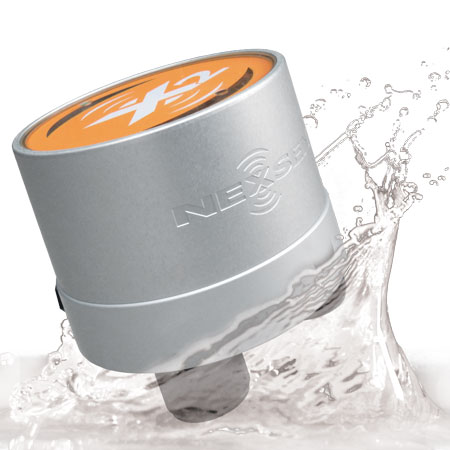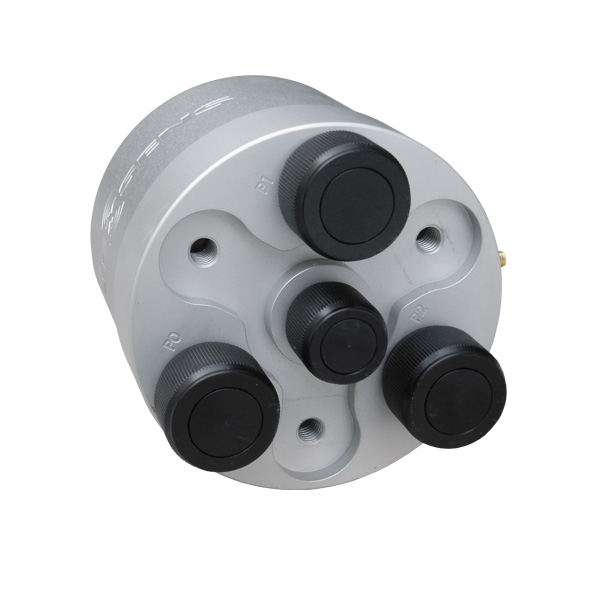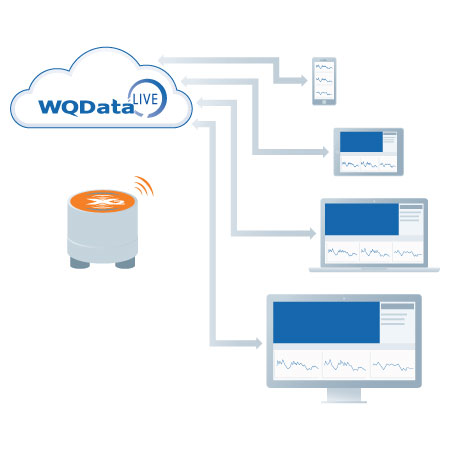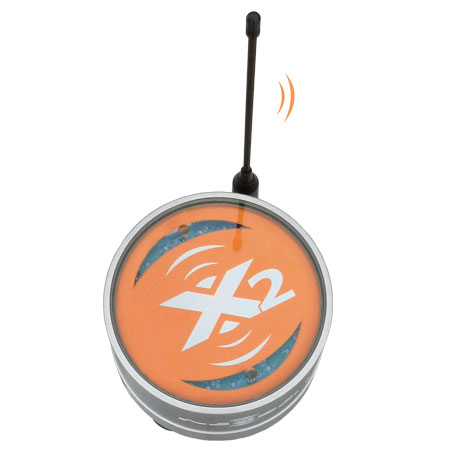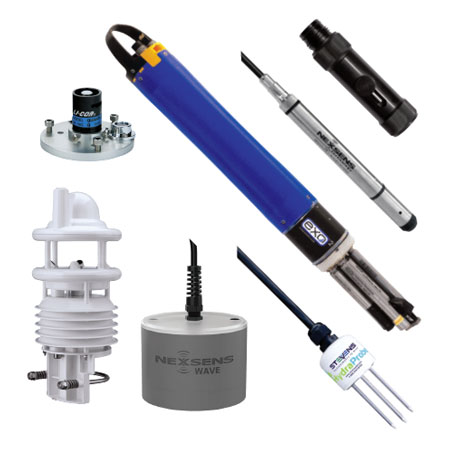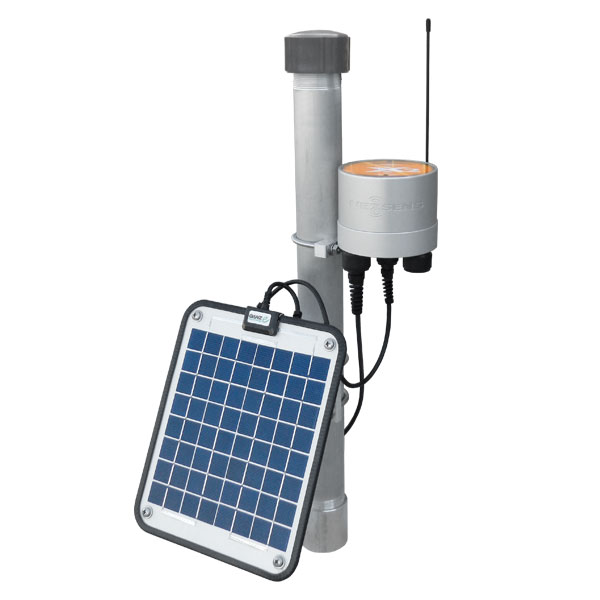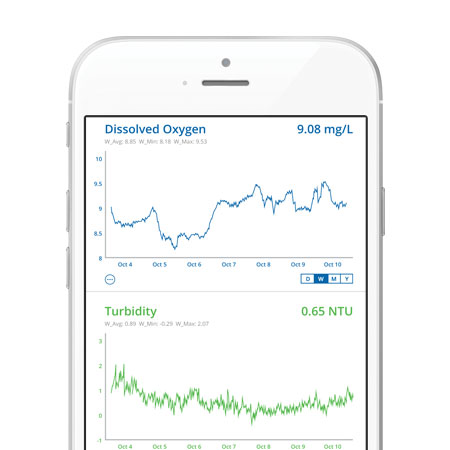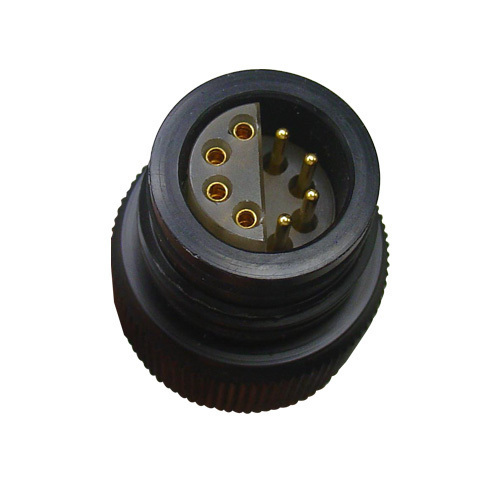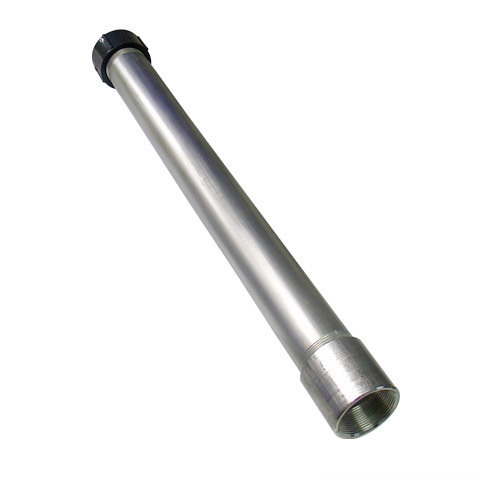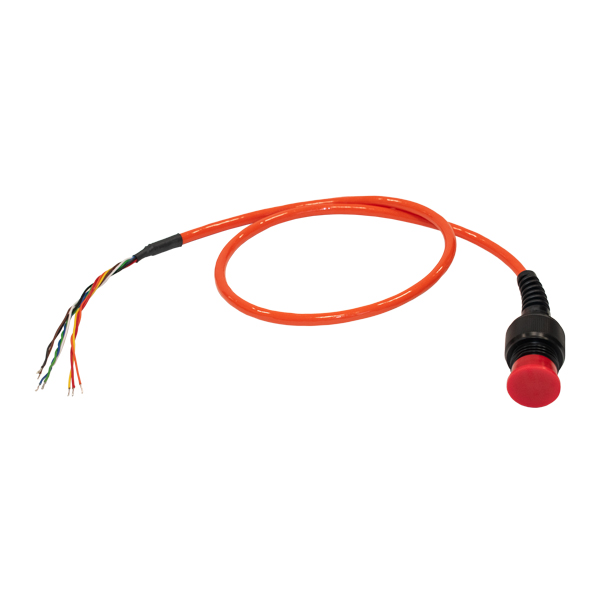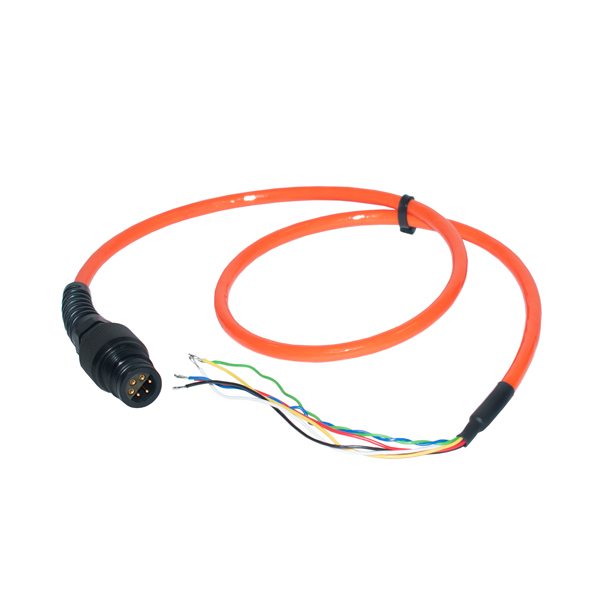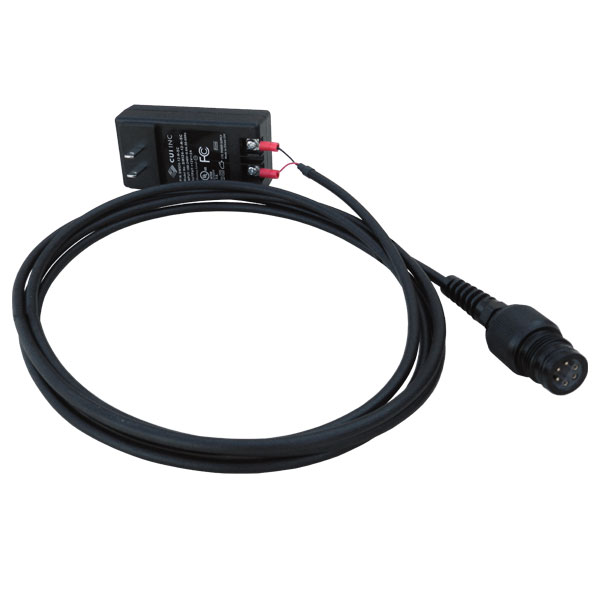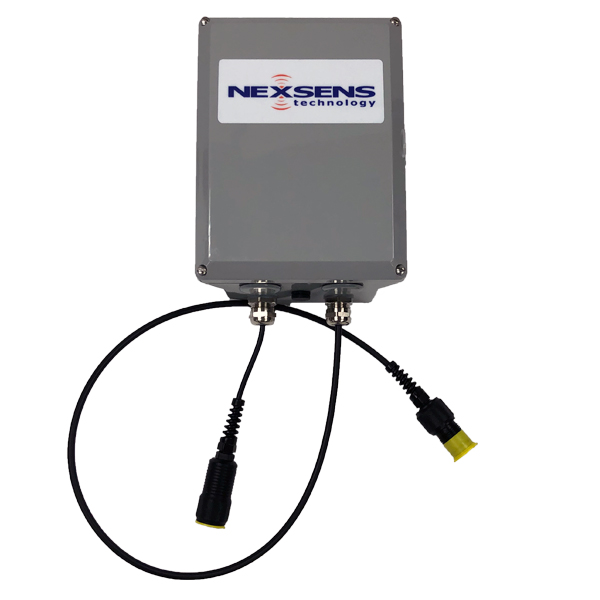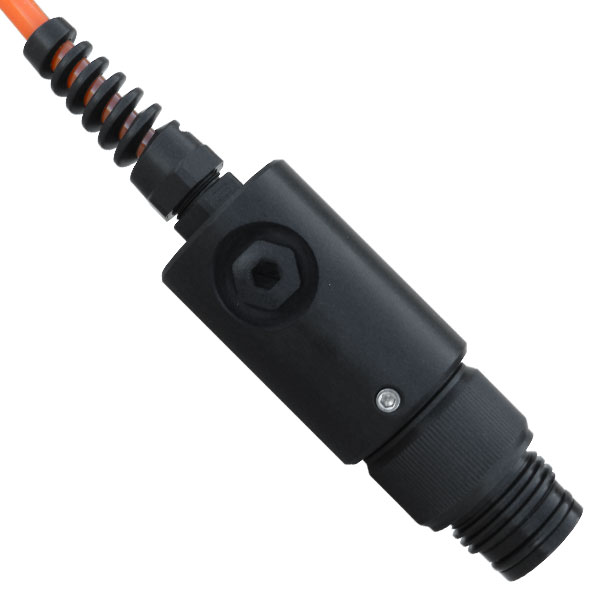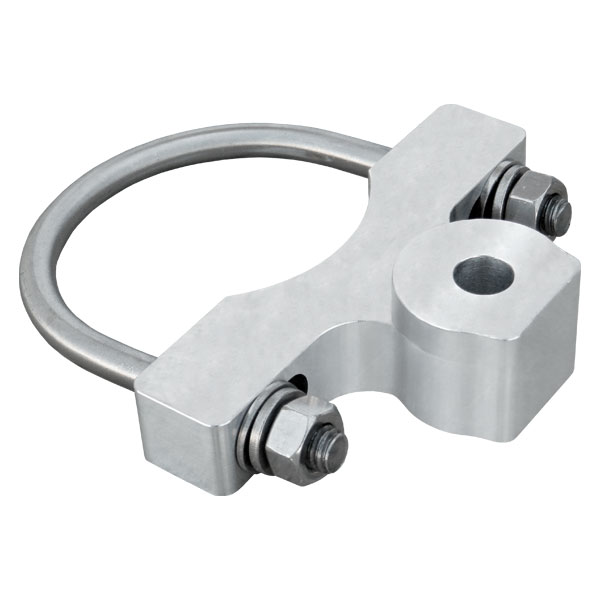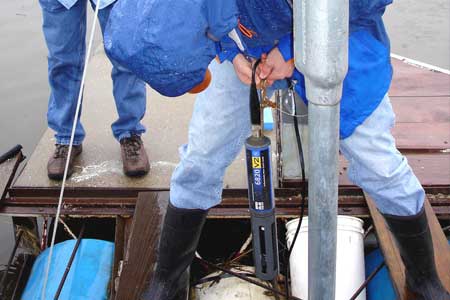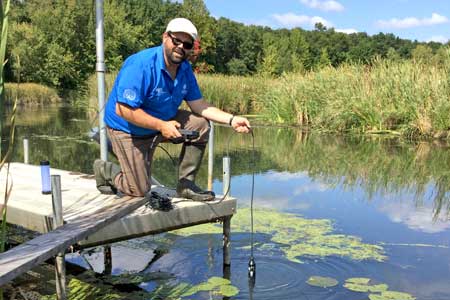X2 Environmental Data Logger
The X2 data logger offers the latest in real-time monitoring technology with wireless communication, a large plug-and-play sensor library, and ultra-low power consumption.
Features
Tech Specs
Mount: (3) 3/8-16 bolt holes on bottom
Material: Anodized aluminum
Weight: 3.5 lbs.
Dimensions: 4.9" Diameter, 4.77" Height
Power Requirements: 5-16 VDC +/-5% (Reverse polarity protected)
Current Draw (Typical @ 12VDC): Low power sleep: 350uA; Active: 45mA; Cellular Transmitting: 300mA; Iridium satellite transmitting: 170mA
Peak Current: Power supply must be able to sustain a 500mA 1-second peak current (@ 12V)
Operating Temperature: -20C to 70°C
Rating: IP67 (Standalone); IP65 (With telemetry)
User Interface: RS-485 direct to CONNECT Software, WQDatalive Web Datacenter, Status LEDs
Data Logging: 256MB microSD card (expandable up to 4GB)
Data Processing: Parameter level polynomial equation adjustment; Basic & Burst Averaging (min, max, standard deviation, and raw data available)
Real Time Clock (RTC): <30sec/month drift1; Auto-sync weekly2; Internal backup battery
Log Interval: User configurable from 1 minute (10 minute default)3; Unique interval per sensor
Transmission Trigger: Time-based; Selective parameter upload option
Sensor Interfaces: SDI-12, RS-232 (3 Channels), RS485
Sensor Power: (3) independent switches from input supply4,5
Built-in Sensors: Temperature (-40 to 85C, 0.1C resolution, ±0.3C accuracy); Humidity (0% to 100%, 0.1% resolution, ±4% accuracy from 5 to 95% RH & -20 to 70C); Battery voltage; System & sensor current
Sensor Ports: (3) 8-Pin for Sensor Interface (RS-232, RS-485, SDI-12, Switched Power, GND)
Power Port: (1) 6-Pin for Power and Communication (Primary/Secondary/Backup Input, RS-485 Host, GND)
Telemetry Options: 4G LTE cellular, CAT-M1 cellular, Iridium satellite
Antenna Port: SMA
Notes
1Assumes 25ºC operating temperature
2Requires the X2 to be connected to the internet
3Minimum log interval dependent on sensor limitations and processing time
4Cumulative concurrent current limit of all three channels is 2A
5Logger power supply must be able to support current requirements of sensors
Q&A
The X2 data logger is directly compatible with sensors that have a native SDI-12, RS-485 or RS-232 output. The data logger can also support analog sensors using an analog-to-digital adapter (PN# mV-RS485) or tipping bucket rain gauges using a pulse-to-digital adapter (PN# RAIN-RS485). There are three tiers of sensor compatibility with the X2 data logger:
- Tier 1 Sensors have auto-detect, which connects sensors automatically without programing -- no prior setup required.
- Tier 2 Sensors must be configured with manufacturer-specific software before connecting to logger. Prior to data logger connection, customers can specify preferred types of parameter outputs.
- Tier 3 Sensors can be added through the creation of a user-defined script. The script is written in Lua and utilizes NexSens-created functions to simplify programming. As long as the sensor communicates using SDI-12, RS-485, or RS-232 and can be powered from a 12V supply, it should be compatible with the X2 data logger.
See the complete list of supported sensors and associated tiers HERE.
Accessories
Case Studies
Katharine Ordway Natural History Study Area
Inspired by a passion for the outdoors and the local terrain that Katharine Ordway had throughout her life, the Katharine Ordway Natural History Study Area (Ordway) at Minnesota's Macalester College is a study in diversity. To preserve the conservation legacy that serves as Ordway's foundation, its mission includes four pillars: education, research, sustainability, and civic engagement. The environmental monitoring that supports that mission is widely varied—and it takes special planning […]
Read More →Using Technology to Protect Tradition
The Nottawaseppi Huron Band of Potawatomi (NHBP) is facing the future with a firm grasp on tradition and a mastery of new technology to handle rapid growth and changes. Recognized as a tribe by the US federal government in 1995, the NHBP employs thousands in western and central Michigan. Since its inception, restoring its land which now spans over 1,000 acres and fostering environmental stewardship for the good of the […]
Read More →Wetland Research And Management
Wetlands the world over are important for a lot of reasons. For one, they are predicted to help buffer the effects of rising sea levels predicted alongside other effects of climate change globally. But on a more local scale, wetlands are important because they act as large living filters that increase water quality while at the same time providing habitat for large numbers of waterfowl and amphibian species. This is […]
Read More →




